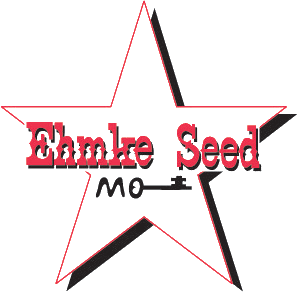By Vance Ehmke
In looking at the recently released list of the most popular wheat varieties planted in Kansas, I am reminded that just because a variety is planted on a lot of acres doesn’t mean you should be planting it.
Years ago in a conversation with former Scott City basketball coach and farmer/cattleman Harold Burnett, he pointed out that to hit a running rabbit, you’ve got to lead it. And if farmers are using the list of most popular varieties as a source of what they ought to be planting, they are shooting at where the rabbit was, rather than where he’s going to be.
In brief, it takes time for a variety to grow in popularity as well as in acreage. But during that time, other new and better varieties have been released. And as rapidly as wheat breeding programs are moving these days thanks to improvements in breeding technology, I’m saying the life of a new wheat variety today is no longer than 2 or 3 years.
A real good case in point is the AgriPro variety Monument. It’s the most popular variety in Kansas and has been the top-planted variety since 2019. But should you be planting it? I don’t think I would. If I wanted to plant an AgriPro variety, after looking at the K-State variety trial data for central Kansas, I think I’d go with the K-State/AgriPro release Bob Dole. In the 2021 trials, Monument had a central Kansas average yield of 72 while Bob Dole averaged over 80 bushels per acre. This is what they call yield drag. This is the price you pay for not keeping current on the varieties you are planting.
Here’s another good example. Again in central Kansas, the K-State variety Zenda is pretty popular. But in the 2021 K-State variety trials, it yielded just short of 72 bushels per acre. On the other hand, the newer Larry variety had an average yield of just under 80 bushels per acre. Do you want to be popular or do you want to make money?
Out here in western Kansas, the Colorado State University variety Langin shows up as a popular wheat. But in looking at newer releases like the Plains Gold Canvas, is it time to switch varieties? You be the judge. In the southwest Kansas irrigated and dryland trials, Canvas was in the top yield group 4 out of 4 times while Langin was in none. What’s more is that Canvas is resistant to wheat streak mosaic while Langin is moderately susceptible. I also like Canvas because it is very good to excellent on drought stress and has excellent straw strength””and beats Langin in both categories.
Let’s say you farm in Greeley County KS and you’re not planting KS Dallas because it’s not popular enough””yet. I guess the polite way to say this is just think of all the Federal and State income taxes you’re not having to pay because you’re not growing this variety. In the K-State variety trials, KS Dallas yields topped that entire location in 2021 and the variety was again in the top yield group the previous year.
Of course, it’s always better if you can look at data from more than just one year. And since we’re now only about 6 weeks from harvest, we’ll soon have an entirely new set of yield data to look at. Shortly after harvest, you’ll be able to find those data on the internet by going to K-State’s 2022 Wheat Crop Performance Trials. Or they’ll also be published in The Wheat Farmer/Row Crop Farmer Wheat Variety book that comes out in the summer. Do you want to shoot at where the rabbit was….or where he’ll be?
